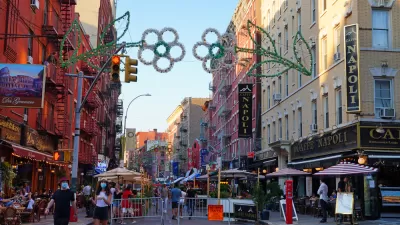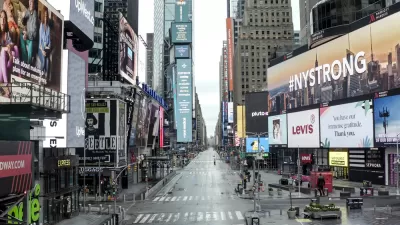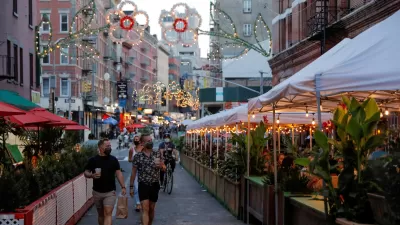As the new world order of working from home and vaccine hesitancy settles in, it's time to reevaluate assumptions from early in the pandemic about the effect of the public health on the economic health of large cities.

"Instead of wiping out big cities, remote work seems to be making them even bigger," according to an article by Hillary Hoffower.
Since the outset of the pandemic, predictions of the demise of urban centers have focused on two narratives. One argued that the spread of infection was connected to the population density of urban centers (the death rates in rural areas as compared to urban areas and skyrocketing cases in Alaska would seem to have dispelled that notion, once and for all). The other argued that working from home would gut the commercial spaces of cities—retail and office uses, both.
While the effects of social distancing, new reliance on delivery services, and no longer commuting into central businesses districts during working hours is having an undeniable effect, and certainly not all of it is for the better, Hoffower makes the case that "Citygoers' relationship with the office likely won't change that much, with a day or two working from home and three to four days in the office, and that means big cities won't wither away."
Hoffower cites an interview with Enrico Moretti, "the economist who (literally) wrote the book on superstar cities, published by Bloomberg Opinion in September, to make the case that superstar cities like New York and San Francisco are immune from the effects of the work from home trend.
There's also a growing body of evidence that "the narrative of mass migration bordered on exaggeration," according to Hoffower.
Stephan D. Whitaker, an analyst at the Federal Reserve Bank of Cleveland, said that while migration did increase in many urban neighborhoods, it hasn't been to the extent that would fit the definition of an exodus.
In fact, the urban exodus was more myth than reality, according to a Bank of America Research note from May, which anticipated an economic reopening would spark a return to superstar cities such as New York City and San Francisco "given their status as economic, financial, and cultural centers."
Direct evidence supports these claims. The United States Postal Service data showed that more Manhattanites moved to Brooklyn than anywhere else from March 2020 to February 2021 (hardly an urban exodus). "Zillow's 2021 Consumer Housing Trends Report showed that some changed neighborhoods or cities, 19% moved to a new city within their metro area, and nearly 40% stayed in the same city but switched neighborhoods," adds Hoffower.
The key to the redemption of superstar cities is in the new flexibility offered by working from home, according to the article.
FULL STORY: Remote work didn't wipe out big cities — it made them even bigger

Alabama: Trump Terminates Settlements for Black Communities Harmed By Raw Sewage
Trump deemed the landmark civil rights agreement “illegal DEI and environmental justice policy.”

Study: Maui’s Plan to Convert Vacation Rentals to Long-Term Housing Could Cause Nearly $1 Billion Economic Loss
The plan would reduce visitor accommodation by 25% resulting in 1,900 jobs lost.

Planetizen Federal Action Tracker
A weekly monitor of how Trump’s orders and actions are impacting planners and planning in America.

Wind Energy on the Rise Despite Federal Policy Reversal
The Trump administration is revoking federal support for renewable energy, but demand for new projects continues unabated.

Passengers Flock to Caltrain After Electrification
The new electric trains are running faster and more reliably, leading to strong ridership growth on the Bay Area rail system.

Texas Churches Rally Behind ‘Yes in God’s Back Yard’ Legislation
Religious leaders want the state to reduce zoning regulations to streamline leasing church-owned land to housing developers.
Urban Design for Planners 1: Software Tools
This six-course series explores essential urban design concepts using open source software and equips planners with the tools they need to participate fully in the urban design process.
Planning for Universal Design
Learn the tools for implementing Universal Design in planning regulations.
Caltrans
Smith Gee Studio
Institute for Housing and Urban Development Studies (IHS)
City of Grandview
Harvard GSD Executive Education
Toledo-Lucas County Plan Commissions
Salt Lake City
NYU Wagner Graduate School of Public Service





























